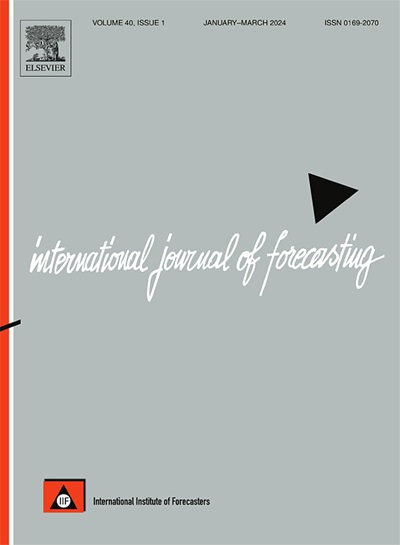预测金融资产的相对表现:不同方法的比较分析
IF 7.1
2区 经济学
Q1 ECONOMICS
引用次数: 0
摘要
我们对M6竞争框架下预测不同可交易资产之间相对表现的各种方法进行了比较分析。为了产生预测,我们采用了各种模型,包括概率、分类和时间序列方法,每个模型都从不同的角度来处理问题。我们证明,在财务预测的情况下,简单的机器学习方法比更复杂的深度学习模型具有更好的性能。此外,将问题作为分类任务来处理似乎是有益的。我们也证实了现有文献的发现,即使用简单的集成技术可以提高绩效,并且对具有较低特质波动率的交易所交易基金和资产的预测绩效更好。最后,我们将我们的结果与参加M6竞赛的团队的表现进行比较。本文章由计算机程序翻译,如有差异,请以英文原文为准。
Predicting the relative performance among financial assets: A comparative analysis of different approaches
We perform a comparative analysis of a wide array of approaches for the problem of forecasting the relative performance among different tradable assets in the framework of the M6 competition. To produce the forecasts, we employ various models spanning probabilistic, classification, and time-series methods, each approaching the problem from a different perspective. We demonstrate that in the case of financial forecasting, simple machine learning approaches have better performance compared to more complex deep-learning models. Furthermore, approaching the problem as a classification task appears to be beneficial. We also confirm findings from existing literature that using simple ensemble techniques can improve performance, and that forecasting performance is better for exchange-traded funds and assets that have lower idiosyncratic volatility. Finally, we benchmark our results against the performance of teams that participated in the M6 competition.
求助全文
通过发布文献求助,成功后即可免费获取论文全文。
去求助
来源期刊

International Journal of Forecasting
Multiple-
CiteScore
17.10
自引率
11.40%
发文量
189
审稿时长
77 days
期刊介绍:
The International Journal of Forecasting is a leading journal in its field that publishes high quality refereed papers. It aims to bridge the gap between theory and practice, making forecasting useful and relevant for decision and policy makers. The journal places strong emphasis on empirical studies, evaluation activities, implementation research, and improving the practice of forecasting. It welcomes various points of view and encourages debate to find solutions to field-related problems. The journal is the official publication of the International Institute of Forecasters (IIF) and is indexed in Sociological Abstracts, Journal of Economic Literature, Statistical Theory and Method Abstracts, INSPEC, Current Contents, UMI Data Courier, RePEc, Academic Journal Guide, CIS, IAOR, and Social Sciences Citation Index.
 求助内容:
求助内容: 应助结果提醒方式:
应助结果提醒方式:


